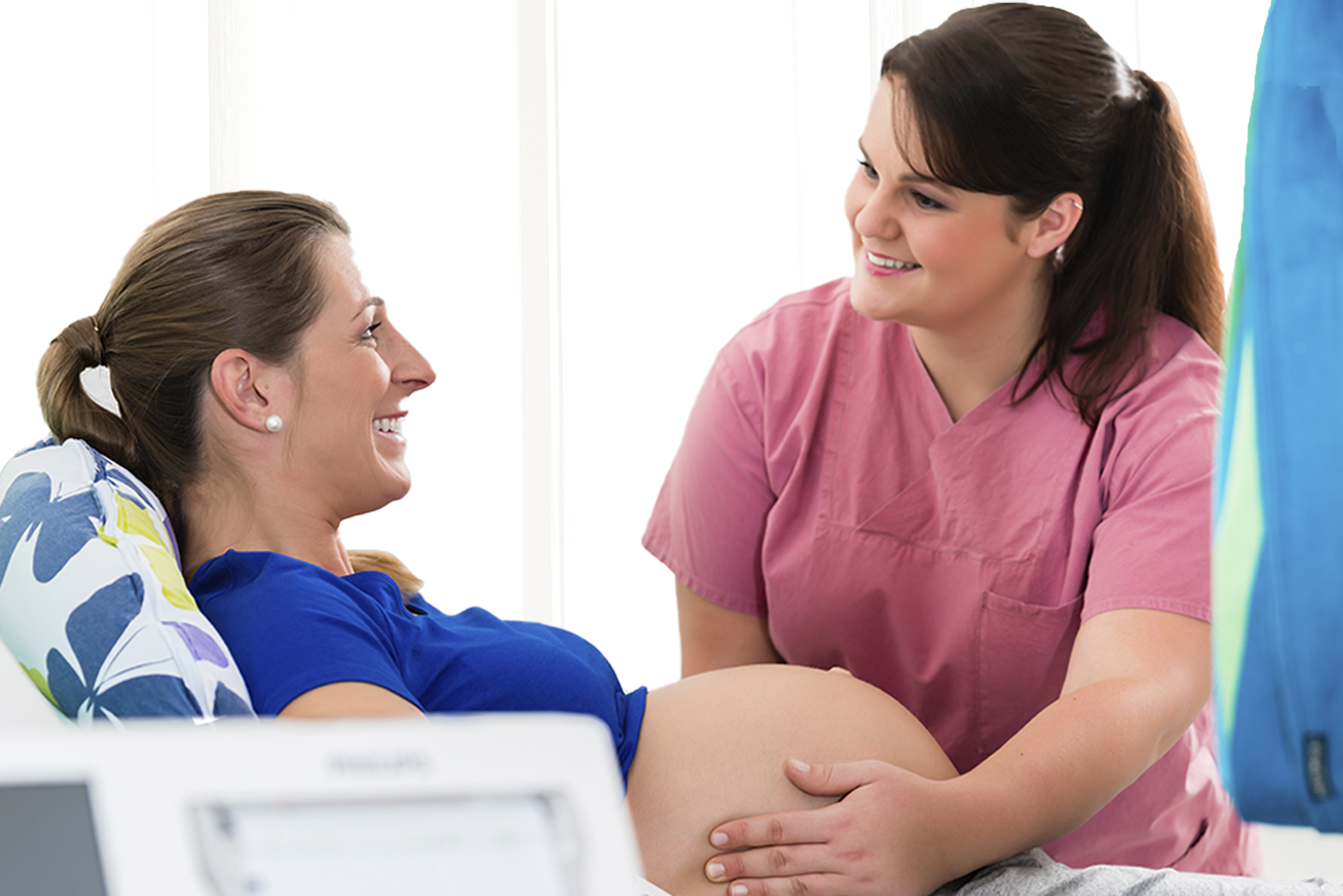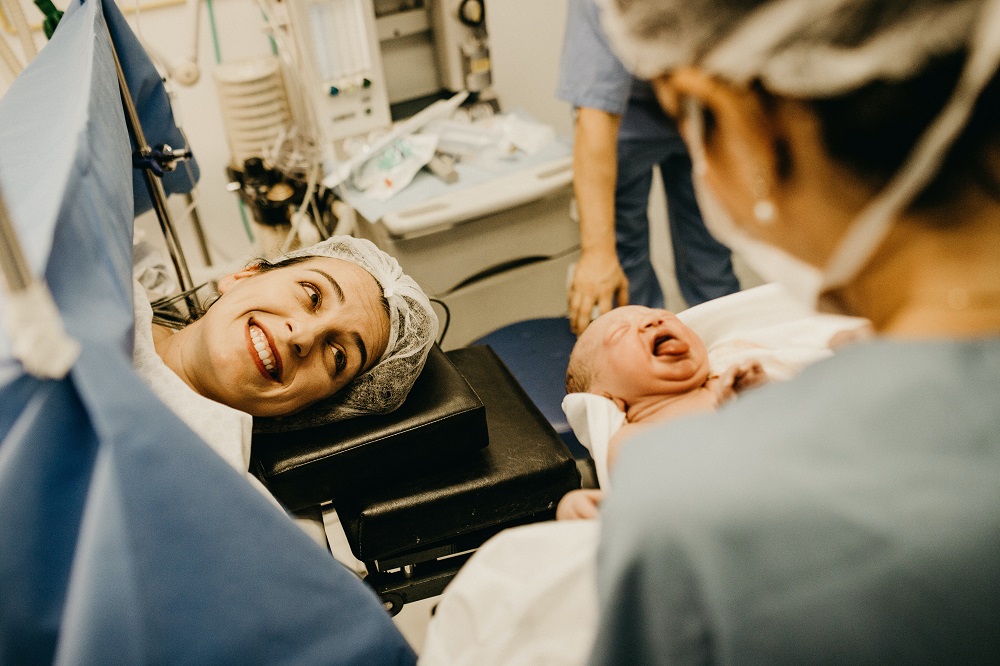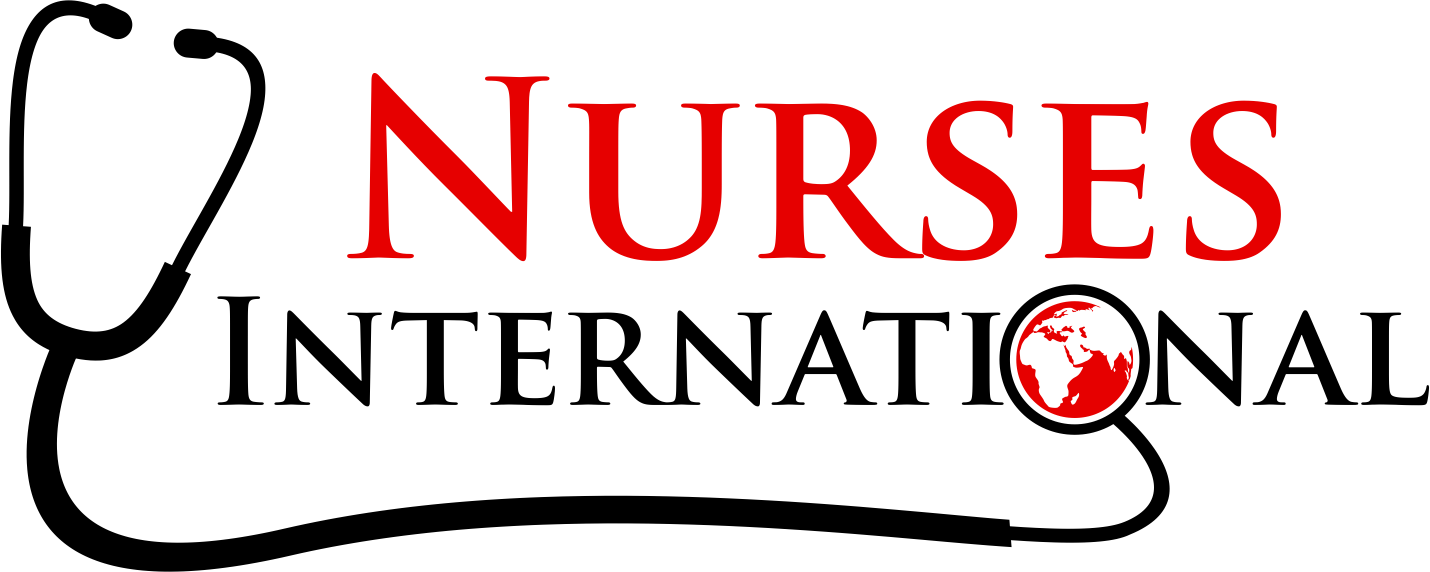-
GeneralGeneralTeachers
-
Maternal Health Homepage

DISCLAIMER: This content is designed to enhance the study of nursing. This content is generic and is not designed to take into account the specific objectives, needs, and/or circumstances of any particular region or country. To become a nurse, learners must successfully complete a program of study approved by the government or state-regulatory agency in their place of residence. We cannot guarantee that the successful completion of these materials will enable you to practice in your place of residence. Make sure that you are in compliance with the scope of practice of your regulatory body before attempting to put into use or practice any of the knowledge gained. This Maternal Health Course provides comprehensive instruction to the student on the concepts and principles for providing patient and family-friendly nursing care to women during normal pregnancy through the ante-natal,
natal, and postnatal periods in hospitals and rural community settings. The goal is to provide a holistic nursing emphasis on the bio-psycho-socio-cultural-spiritual needs of the pregnant woman and her family during the phases of pregnancy, childbirth,
and the neonatal period common to populations in both the minority and majority world populations.
This Maternal Health Course provides comprehensive instruction to the student on the concepts and principles for providing patient and family-friendly nursing care to women during normal pregnancy through the ante-natal,
natal, and postnatal periods in hospitals and rural community settings. The goal is to provide a holistic nursing emphasis on the bio-psycho-socio-cultural-spiritual needs of the pregnant woman and her family during the phases of pregnancy, childbirth,
and the neonatal period common to populations in both the minority and majority world populations.
Global nursing scope of practice varies widely depending on the country, national, regional government, and professional regulatory agencies. In an attempt to be relevant to the entire global nursing community, this course addresses nursing skills and practice on several levels. It is the nurse’s responsibility to know what particular regulations apply to their area of practice.
The Maternal Health Course is a competency-based course developed in partnership with Nurses International (NI) and NextGenU.org (NGU). Competencies were developed in collaboration with maternal health and public health subject matter experts. The Essentials: Core Competencies for Professional Nursing Education direct the course objectives. The course uses learning resources from accredited world-class organizations such as the U.S. Centers for Disease Control and Prevention (CDC), the U.S. National Institutes of Health, the World Health Organization, universities, international guidelines, and peer-reviewed journals. The Moodle Learning Management System (LMS) is utilized for facilitating distance learning. The course was designed by NextGenU’s Instructional Design team and Nurses International’s team members with particular thanks to Kathleen Capone MS, RN CNE, EdD; Stephanie Marfurt Ph.D., ARNP-BC; Renee Marg DNP, RN; Sarah Bohling MSN, RN, APRN-NCNS; Aundrea Bevis, RN, BSN, MPH; and Melissa Turner, DNP, RN, FNP-C.
There are 6 units/modules to complete, which include:
- Unit 1: Introduction to Pregnancy
- Unit 2: Changes in Pregnancy
- Unit 3: Nursing Care during Antenatal Period
- Unit 4: Nursing Care during Labour and Delivery
- Unit 5: Postnatal Nursing Care
- Unit 6: Nursing Care for High-Risk Pregnancy, Labour, and Delivery
Instructions:
The course consists of six learning units. Included in the units are individual lessons with accompanying assigned reading resources, PowerPoint reviews, and student self-assessment. Learners are directed to carefully read the speaker notes in the PowerPoint reviews as they elaborate on important information and are considered an essential part of the didactic course content. Through self-assessments are not graded they help the learners to evaluate their learning for the respective lesson.
There is no time limit for course completion. The learner may return to the course and resume the lessons at any time. There is a 50- question multiple-choice exam at the end of the course. A grade of 80% is required. If a grade of 80% is not achieved, the learner may self-remediate and take another exam. The second exam is of comparable content, and 80% is required for a passing grade. If you were directed to this course by your learning institution then your learning institution may have different requirements for course passage and time limits.
The course may be taken again in its entirety. Certification of completion may be downloaded upon successful completion of the course. This content is designed to enhance your study of nursing or to prepare you to enter a program of nursing education. To become a nurse, you must successfully complete a program of study approved by the government or state-regulatory agency in your place of residence.
Engaging with this Course:
You may take this course at no cost for your personal enrichment; there are no course prerequisites.
To obtain a certificate, a learner must successfully complete:
- All the reading requirements,
- All quizzes and pass with 100% having unlimited attempts,
- All activities and case studies,
- The final exam with a minimum of 80% and a maximum of 3 attempts, and
- The self and course evaluation forms.
NextGenU.org is happy to provide your institution with
- A link to and description of the course training, so they can see all its components, including the cosponsoring universities and other professional organization cosponsors;
- Your grade on the final exam;
- Your work products (e.g. case study activities), and any other required or optional shared materials that you produce and authorize to share with them;
- Your evaluations -- course, and self-assessments;
- A copy of your certificate of completion.
To obtain a degree, NextGenU.org co-sponsors degree programs with institutional partners. To obtain a full degree co-sponsored with NextGenU.org, registrants must be enrolled in a degree program as a student of a NextGenU.org institutional partner. If you think that your institution might be interested in offering a degree with NextGenU.org contact us.
We hope that you will find this a rewarding learning experience, and we count on your assessment and feedback to help us improve this training for future students.
Here are the next steps to take the course if you would like to download a certificate:
- Complete the registration form.
- Take the pre-test.
- Begin the course with Module 1. In each lesson, read the description, complete all required readings and any required activity, and take the corresponding quizzes.
- Nurse educators may contact info@nursesinternational.org with any questions or for permission to access faculty files for this course which includes didactic and clinical syllabi, teacher’s guide, suggested teaching activities for classroom and clinical, and a question bank.
Subscribe to our newsletter to be notified of future updates, new courses, and to be part of our community.
-
Unit 1: Introduction to Pregnancy
Unit Objectives:

- Identify the nurse’s role in delivering compassionate care.
- Support the mother’s role in self-care.
- Apply holistic principles of maternal and family care to support the cultural integrity of child-bearing families.
- Understand the transition to pregnancy including major tasks as they relate to maternal, paternal, and family adaptation.
-
1.1 Empathetic Care and Mother-Friendly Care
Learning Objectives:
- Define empathetic care.
- Identify the significance of empathetic care.
- Define the elements of empathetic care.
- List the principles of mother-friendly care related to pregnancy.
- Describe mother-friendly care during antenatal, intrapartum, and postnatal periods.
- List seven ways that mothers can participate in self-care.
6 URLs -
1.2 Transition and Tasks of Pregnancy
Learning Objectives:
- State the importance and purpose of maternal role development.
- Identify maternal tasks of pregnancy.
- List factors that demonstrate maternal role attainment.
- Identify barriers to completion of maternal tasks.
1 URL -
1.3 Cultural Beliefs and Pregnancy
Learning Objectives:
- Define culture and its effect on the childbearing family.
- Identify cultural values, beliefs, and traditions of pregnancy.
- Compare global cultural differences during pregnancy and childbirth.
- Identify the role of the maternity nurse in culturally diverse settings.
4 URLs, 1 SCORM package -
Unit 2: Changes in Pregnancy
Unit Objectives:

- Understand the process of conception.
- Understand fetal development.
- Describe the physiologic changes in pregnancy, their accompanying discomforts, and appropriate nursing interventions.
- Identify methods for determining gestational age.
- Describe the elements of antenatal, maternal, and fetal assessment.
-
2.1 Conception
Learning Objectives:
- Identify the parts of the female reproductive system.
- Describe the process of conception and pregnancy.
4 URLs -
2.2 Anatomical, Physiological and Psychological Changes in Pregnancy
Learning Objectives:
- Summarize anatomical changes in pregnancy.
- Explain physiological changes in pregnancy.
- Describe psychological changes in pregnancy.
- List 5 common discomforts during pregnancy.
- Provide examples of nursing interventions to address discomforts of pregnancy
5 URLs, 1 SCORM package -
2.3 Fetal Development and Circulation (Part-I)
Learning Objectives:
- Differentiate between pre-embryonic and embryonic development.
- Explain the key differences between monozygotic twins and dizygotic twins.
- List the stages of fetal development, key landmarks, and critical time frames
5 URLs -
2.4 Fetal Development and Circulation (Part-II)
Learning Objectives:
- Describe the function of amniotic fluid.
- Identify the structure and function of the placenta.
- Understand fetal circulation.
5 URLs -
2.5 Diagnosis of Pregnancy
Learning Objectives:
- Identify the possible signs of pregnancy.
- Identify the diagnostic signs of pregnancy.
- Describe and apply the GTPAL system.
- Calculate Estimated Due Date (EDD) and gestational age.
9 URLs, 3 Files -
2.6 Prenatal Assessment
Learning Objectives:
- Describe the sequence of prenatal visits.
- List the critical lab tests performed during each stage of pregnancy.
- Identify maternal risk factors.
- Describe the elements of the patient teaching session.
10 URLs, 1 SCORM package, 1 File -
2.7 Fetal Assessment
Learning Objectives:
- List the uses/indications for ultrasound.
- Compare and contrast CVS, amniocentesis, and AFP testing.
- Describe patient teaching for daily fetal movement counting and recording.
- Explain the use of NST and BPP for determining fetal well-being.
- Describe the method for fetal growth monitoring.
- Identify the procedure for performing the Leopold maneuver.
12 URLs, 2 Files -
Unit 3: Nursing Care During Antenatal Period
Unit Objectives:

- Identify the nurse’s role in the care of the antepartal woman.
- Describe the nutritional needs of the pregnant and lactating woman.
- Apply holistic principles in the identification and care of a women experiencing IPV.
- Relate the significance of the comprehensive exam, including maternal history, to pregnancy outcomes.
- Explore the role of the nurse in assisting the pregnant woman and her family to prepare for childbirth.
-
3.1 Nursing Care in the Antenatal Period
Learning Objectives:
- Explain antenatal care.
- Recognize the physiological changes in pregnancy.
- Describe common discomforts of pregnancy and safe management practices.
- State key warning signs & symptoms during pregnancy.
5 URLs -
3.2 Nutrition During Pregnancy and Lactation
Learning Objectives:
- Recall key reasons that nutrition in pregnancy is important.
- Explain the importance of key nutrients in pregnancy.
- Determine if a diet is adequate for a pregnant woman.
8 URLs, 1 File -
3.3 Intimate Partner Violence
Learning Objectives:
- Define IPV.
- List the risk factors for IPV.
- Summarize the consequences of IPV.
- Describe the nurse’s role in the identification, prevention, and treatment of IPV
6 URLs -
3.4 Maternal History
Learning Objectives:
- Discuss the purpose of the maternal history.
- Identify the components of the prenatal health history.
- Discuss the nurse's role in performing a comprehensive health history.
4 URLs -
3.5 Maternal Physical Exam
Learning Objectives:
- Discuss the purpose of the maternal physical examination.
- Identify the components of the maternal physical examination.
- Discuss the nurse's role in performing a comprehensive physical examination
10 URLs, 1 SCORM package, 5 Files -
3.6 Family Interview
Learning Objectives:
- Define the family interview.
- Explain the purpose of the family interview.
- Describe the 5 keys ingredients of a family interview.
- Describe the nurse’s role in the family interview.
8 URLs, 1 File -
3.7 Birth Preparedness
Learning Objectives:
- Describe birth preparedness and its importance in maternal health and childbirth.
- Identify components of the birth preparedness plan.
- Identify when the birth preparedness plan is to be made with the client.
- Examine differences in birth preparedness plans with respect to accessibility to healthcare centers
6 URLs, 1 SCORM package -
Unit 4: Nursing Care During Labor and Delivery
Unit Objectives:

- Identify the stages of the delivery process.
- Explore methods of pain management in labor.
- Identify the key factors for assessment of the fetus during labor.
- Identify the nurse’s role in the care of the laboring woman.
-
4.1 Overview of the Labor and Birth Process
Learning Objectives:
- Define labor and birth.
- Define the 4 stages of labor and delivery.
- List the 5 P’s of labor and delivery.
- Describe the evidence-based practice on the frequency of vaginal examination in labor.
- Explain the use of partograph in labor and birth.
8 URLs, 2 Files -
4.2 Pain Management In Labor
Learning Objectives:
- Explain the causes of pain in labor.
- List drugs that can be given during labor for analgesia.
- Explain the different pain management methods.
6 URLs -
4.3 Fetal Monitoring
Learning Objectives:
- Identify signs of fetal well-being.
- Screen signs of a fetus at risk of complication.
1 URL, 1 File -
4.4 Nursing Care During First Stage of Labor
Learning Objectives:
- Describe the monitoring, management, and evaluation of the first stage of labour.
- Describe the importance of the partograph.
- Identify poor progress during the first stage of labor.
- Recognize the risk factors and management of a prolapsed umbilical cord
5 URLs, 1 File -
4.5 Nursing Care During Second Stage of Labor
Learning Objectives:
- List the signs that stage 2 of labor is starting.
- Describe the cardinal movements of labor (fetal descent and delivery).
- Explain 4 ways a nurse can support a woman during delivery.
- Name 3 warning signs during delivery.
- Summarize the steps of delivering a baby during stage 2 of labor.
14 URLs, 2 Files, 1 Interactive Component -
4.6 Nursing Care During Third Stage of Labor
Learning Objectives:
- Define the third stage of labor and management.
- List the observations needed during the third stage of labor.
- Examine a placenta after delivery.
- List the causes of postpartum hemorrhage.
- Manage a patient with postpartum hemorrhage.
7 URLs, 4 Files -
4.7 Nursing Care During Fourth Stage of Labor
Learning Objectives:
- Identify the immediate care needs of a patient in the 4th stage of labor.
- Describe assessment and treatment related to perineum care.
- Describe assessment and prevention related to postpartum hemorrhage.
- Recognize the causes of uterine atony and/or abnormal uterine involution.
- Identify client teaching for self-care.
6 URLs, 1 SCORM package, 3 Files, 1 Interactive Component -
Unit 5: Postnatal Nursing Care
Unit Objectives:

- Identify the physical and emotional changes during the postpartum period.
- Identify nursing interventions related to safe vaginal and surgical birth.
- Identify the needs and care of the term newborn infant.
- Explore the nurse’s role in promoting successful breastfeeding.
- Explore the needs of the patient who has experienced a perinatal loss.
-
5.1 Postnatal Care - Normal Vaginal Delivery
Learning Objectives:
- Define postnatal care.
- List the physical changes which occur during the postnatal period.
- Describe the recognition and management of postnatal danger signs.
- Recognize puerperal psychiatric disorders.
- Identify client teaching regarding postnatal care.
13 URLs, 3 Files -
5.2 Postnatal Care for Caesarean Section Mothers
Learning Objectives:
- Describe postnatal care for post cesarean section patients.
- Describe the recognition and management of danger signs.
- Identify client teaching regarding postnatal care for cesarean section.
3 URLs, 1 File -
5.3 Breastfeeding
Learning Objectives:
- Describe the structure of the lactating breast and summarize the lactation process.
- List the advantages of breastfeeding for mothers and newborns.
- Describe the assessment of adequate feeding patterns (latch, frequency).
- Recall the nutritional and hydration needs of the mother.
- Explain the factors that affect breastfeeding and management.
- Explain the process of breastfeeding in HIV mothers.
- Describe red flags related to breast infection.
13 URLs, 6 Files -
5.4 Newborn Care and Immunization
Learning Objectives:
- Identify immediate care needed by the baby after birth.
- Describe the assessment of a newborn after delivery.
- Describe the components of essential newborn care during initial hours after birth.
- Identify client teaching on newborn care.
37 URLs, 16 Files -
5.5 Family Planning Methods
Learning Objectives:
- Recall the indications for use of various hormonal and barrier methods of contraception.
- Discuss appropriate patient education associated with various contraceptive methods.
- Describe side effects, contraindications, and danger signs of hormonal contraceptives.
- Describe the use of barrier methods to prevent sexually transmitted diseases and HIV
4 URLs, 1 SCORM package -
5.6 Perinatal Loss and Grief
Learning Objectives:
- Define pregnancy loss & grief.
- Recognize signs & symptoms associated with preterm and term loss.
- Improve caregiver emotional education and preparation.
- Deliver better care through caregiver compassion and patient education.
- Understand cultural and spiritual aspects of pregnancy loss.
1 URL -
Unit 6: Nursing Care for High-Risk Pregnancy, Labor, and Delivery
Unit Objectives:

- Explore the physical, social, and psychological factors that contribute to a high-risk pregnancy.
- Identify standard management of patients with high-risk pregnancies.
- Demonstrate teaching methods to help patients with high-risk pregnancies participate in their care to achieve positive health outcomes.
- Identify the nurse’s role in reducing the risk in high-risk pregnancies.
-
6.1 Hypertension and Pregnancy
Learning Objectives:
- Explain the diagnosis of hypertension in pregnancy.
- Differentiate between pre-existing and gestational hypertension.
- List possible complications of hypertension in pregnancy.
- Identify the management of hypertension and preeclampsia.
- Identify teaching points for managing hypertension in pregnancy.
6 URLs -
6.2 Gestational Diabetes
Learning Objectives:
- Differentiate between pre-existing and gestational diabetes.
- List possible complications of gestational diabetes.
- Explain how diabetes is diagnosed in pregnancy.
- Explain the teaching points for managing gestational diabetes.
5 URLs -
6.3 HIV and Pregnancy
Learning Objectives:
- Define HIV infection.
- Describe how pregnant women can be screened for HIV infection.
- List the possible complications of HIV infection in pregnancy.
- Explain prevention strategies of HIV during pregnancy.
- Discuss perinatal care for HIV patients.
- Explore the management of breastfeeding in HIV-positive mothers.
5 URLs -
6.4 Hydatidiform Mole and Ectopic Pregnancy
Learning Objectives:
- Define hydatidiform mole and ectopic pregnancy.
- Identify their symptoms and signs.
- Describe their management and treatment.
- Identify client teaching regarding these complications.
8 URLs -
6.5 Infections During Pregnancy
Learning Objectives:
- Define high-risk pregnancy.
- Describe the infections that put pregnancy at risk.
- Summarize the modes of transmission and effects on the mother and fetus.
- Describe the treatment and management of such infections.
12 URLs -
6.6 Hematological Disorders
Learning Objectives:
- Describe hematological disorders in pregnancy.
- Identify the impact of hematological disorders on the pregnancy, birth, and postpartum periods.
- Outline fetal and neonatal implications of hematological disorders.
- Recall the management of hematological disorders in pregnancy, birth, and the postpartum period.
- Discuss nursing interventions related to complications.
5 URLs -
6.7 Fetal Dystocia and Laceration
Learning Objectives:
- Define fetal dystocia.
- Summarize the associated risk factors of fetal dystocia.
- Explain the management/treatment of fetal dystocia.
- Discuss lacerations during the birth process.
- Restate the management and treatment of lacerations.
4 URLs -
6.8 Placenta Previa/Accreta/Increta/Percreta & Vasa Previa
Learning Objectives:
- Define placenta previa , placenta accreta/increta/percreta, and vasa previa.
- Identify their signs and symptoms.
- Describe their diagnosis, treatment, and management.
9 URLs -
6.9 Placental Abruption and Infection
Learning Objectives:
- Define placental abruption.
- Define chorioamnionitis .
- Identify their signs and symptoms.
- Describe their diagnosis, treatment, and management.
7 URLs -
6.10 Preterm Labor
Learning Objectives:
- Define preterm labor.
- Identify its risk factors and diagnosis.
- Describe the management of preterm labor.
5 URLs -
6.11 Poor Progress of Labor
Learning Objectives:
- Define failure to progress labor (poor progress of labor).
- Identify its risk factors and diagnosis.
- Describe the management of failure to progress.
3 URLs -
6.12 Induction and Augmentation of Labor
Learning Objectives:
- Define the induction and augmentation of labor.
- Identify indications for induction and augmentation of labor.
- Describe the management of induction and augmentation of labor.
4 URLs - Define the induction and augmentation of labor.
-
6.13 Substance Abuse and Pregnancy
Learning Objectives:
- Explain the health risks associated with alcohol, tobacco, and illicit drugs.
- Explain the pregnancy risks associated with alcohol, tobacco, and illicit drugs.
- Discuss the nursing care related to a pregnant woman who issuing tobacco alcohol or illicit drugs.
- Discuss teaching needs associated with alcohol, tobacco, and illicit drugs.
7 URLs -
6.14 Substance Abuse and Neonatal Health
Learning Objectives:
- Explain the risks to the newborn related to alcohol, tobacco, and illicit drugs.
- Discuss the nursing care of the infant of a mother who uses alcohol tobacco or illicit drugs.
- Discuss teaching needs associated with alcohol, tobacco, and illicit drugs.
10 URLs -
Course and Self Evaluation & Certificate
 In this section, you can provide feedback about this course to help us make NextGenU.org better. Once evaluations are completed, you will be able to download your certificate of completion.
In this section, you can provide feedback about this course to help us make NextGenU.org better. Once evaluations are completed, you will be able to download your certificate of completion.


 Click here to start Final Examination
Click here to start Final Examination